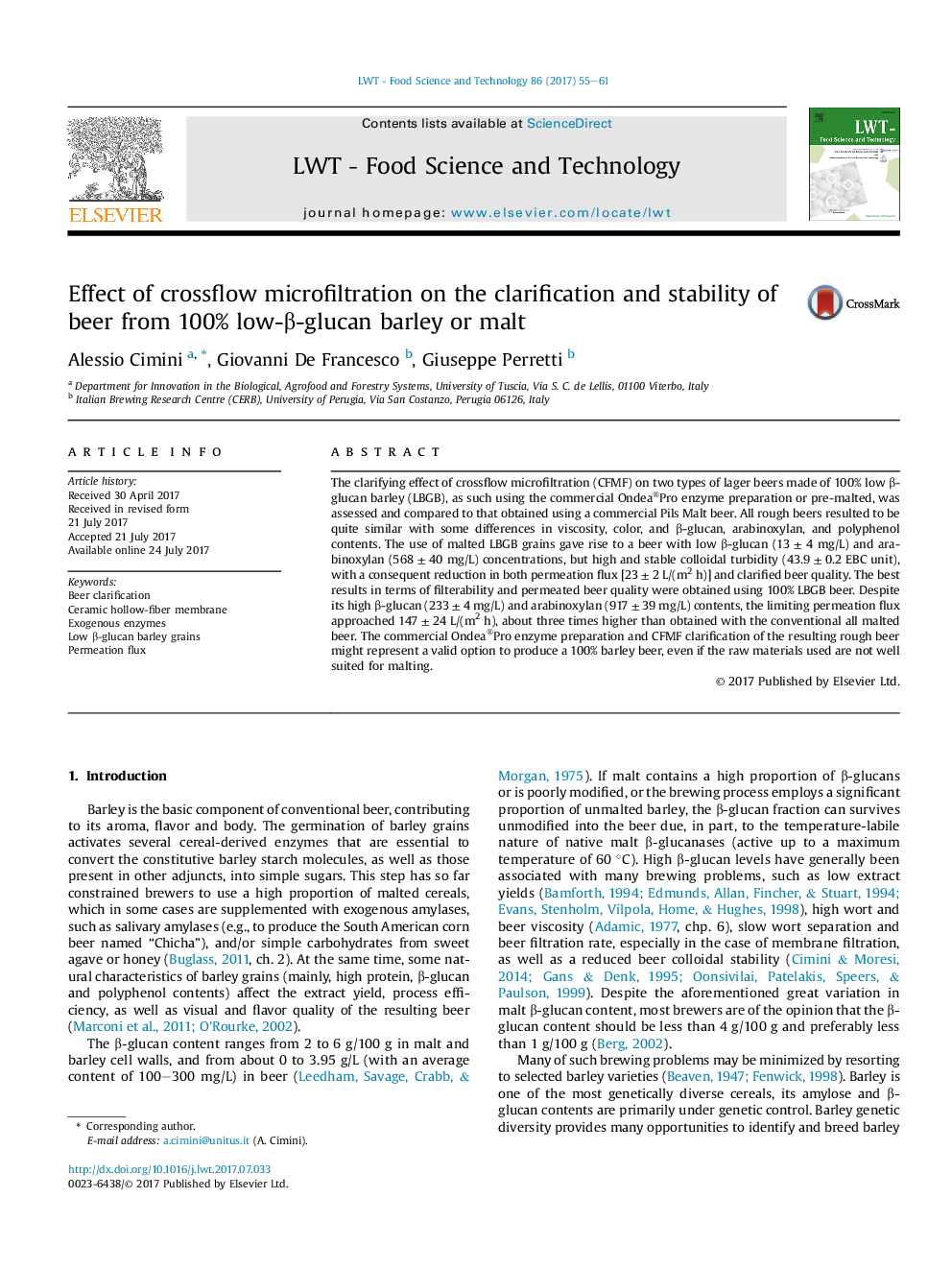| Article ID | Journal | Published Year | Pages | File Type |
|---|---|---|---|---|
| 5768659 | LWT - Food Science and Technology | 2017 | 7 Pages |
â¢Rough beer from 100% barley was characterized by quite a high CFMF permeation flux.â¢Î²-glucan and arabinoxylan contents are not exhaustive indicators for CFMT performance.â¢Ondea® Pro represents a valid option to produce a 100% barley beer.â¢The tanno-proteic colloidal particles strongly affect the permeation flux.
The clarifying effect of crossflow microfiltration (CFMF) on two types of lager beers made of 100% low β-glucan barley (LBGB), as such using the commercial Ondea®Pro enzyme preparation or pre-malted, was assessed and compared to that obtained using a commercial Pils Malt beer. All rough beers resulted to be quite similar with some differences in viscosity, color, and β-glucan, arabinoxylan, and polyphenol contents. The use of malted LBGB grains gave rise to a beer with low β-glucan (13 ± 4 mg/L) and arabinoxylan (568 ± 40 mg/L) concentrations, but high and stable colloidal turbidity (43.9 ± 0.2 EBC unit), with a consequent reduction in both permeation flux [23 ± 2 L/(m2 h)] and clarified beer quality. The best results in terms of filterability and permeated beer quality were obtained using 100% LBGB beer. Despite its high β-glucan (233 ± 4 mg/L) and arabinoxylan (917 ± 39 mg/L) contents, the limiting permeation flux approached 147 ± 24 L/(m2 h), about three times higher than obtained with the conventional all malted beer. The commercial Ondea®Pro enzyme preparation and CFMF clarification of the resulting rough beer might represent a valid option to produce a 100% barley beer, even if the raw materials used are not well suited for malting.
